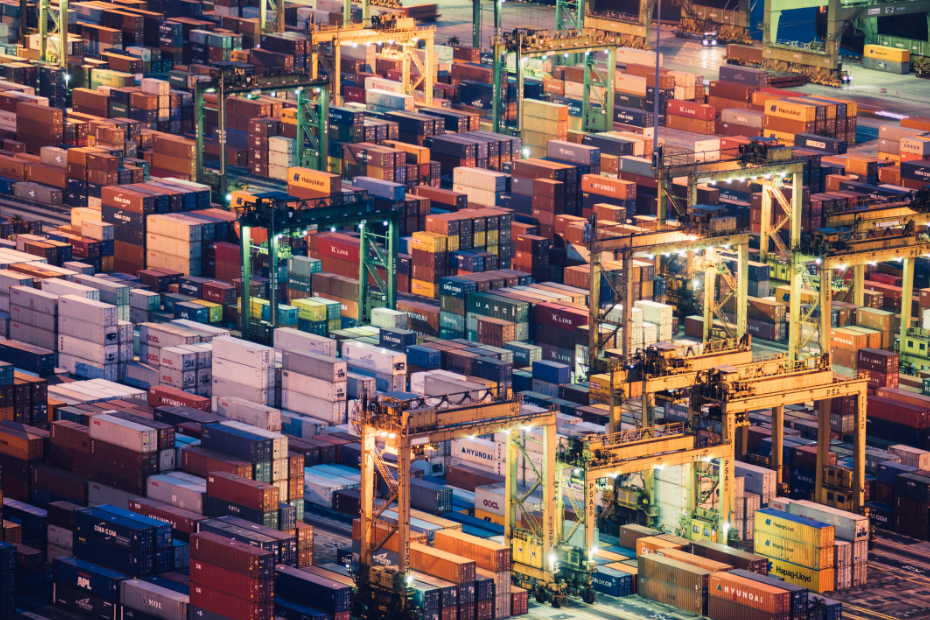Published June 20, 2023 • 6 Min Read
When it comes to supply chain trends, there’s a major shift happening across all industries, and as Andrew Waitman, the CEO of Assent — a global SaaS (software) organization that helps businesses transform their compliance and sustainability programs, points out, many organizations may not be ready for what’s in store.
“What used to matter most for supply chains was the economics,” he says, noting profitability and the ability to respond to micro- and macro-economic pressures was incredibly important. That’s not to say they don’t matter now, he added, “but the pendulum is swinging toward resiliency” and the ability of organizations to keep pace with consumer demands for products that are in line with evolving norms.
“Different verticals and industries will [face different challenges],” Andrew notes, but by and large the trends that are popping up will impact every organization.
What are those trends and how can you help your business prepare for them?
The two biggest trends impacting the supply chain right now
Traceability and supplier transparency
This trend, Andrew notes, speaks to the growing need for companies to know where they’re getting their products from, how they’re being made, who’s making them, and who is distributing them. In many cases, governments are even starting to enact laws that will force companies to show the items they’re importing meet national standards and regulations and aren’t tied to illegal practices.
“You’re seeing this in Europe, [which is] a bit ahead of North America,” Andrew says. “But the move makes sense. [Leaders wouldn’t let] safety issues or these types of things go on in [their] company, so why would they let them occur in their suppliers?”
These suppliers, he adds, are — essentially — a part of an organization’s extended team, so demanding information from them about their credibility and authenticity is, in effect, no different than requiring an employee to do the same thing.
Take, for example, minerals. If an organization uses minerals in their production process, they should be asking their supplier “Where is this gold coming from? Can you prove this information?” Otherwise, an organization could end up using conflict minerals in their products — something most leaders wouldn’t want, especially if that means losing the trust of customers, shareholders, or employees.
PFAS
If you’re not familiar with per- and polyfluoroalkyl substances (PFAS), then now’s the time to get to know them, Andrew says. (For a deep dive, you can check out a helpful article Assent recently wrote about the subject here.)
At the most basic, PFAS are durable, synthetic fluorocarbons that are not only incredibly persistent, they’re bio-accumulative and toxic. There are some 12,000 different substances in the PFAS family and if their use isn’t already heavily regulated in your jurisdiction, they soon will be. New regulations are cropping up and reporting definitions about the substances are being broadened.
“It’s important companies start collecting information now,” Andrew says, largely because discerning whether these items are hidden in your supply chain may take a substantial amount of time. “These chemicals are everywhere … they’re robust and used in everything from rain gear to frying pans … so this is a huge topic … and it’s a huge wake up call … [compliance] is coming much faster than [most] people expect.”
He adds that because of the toxic nature of the substances, there’s a lot of emotion attached to their use — consumers will begin to demand that the companies they support and invest in are PFAS-free.
How companies can respond
First: Educate
The first step to getting your supply chain in line with current and evolving regulations, Andrew says, is to get educated on the issues mentioned above and to better understand the liabilities attached to not complying with new standards.
“[Traceability, supplier transparency, and PFAS] are all going to become mainstream,” he says. “That may not happen overnight, but it’s going to happen. [For issues like this], you need to determine, where’s crawl, where’s walk, where’s run, so you can demonstrate you’re responding to market trends.”
Second: Assess
Trying to uncover issues within your supply chain can be a bit like finding a needle in a haystack, notes Andrew. “It can be challenging … it can also be overwhelming … you [can] kind of panic.”
That’s where experts like those at Assent come in. The organization’s platform gives manufacturers deep visibility into their supply chains by supporting the collection, management, and analysis of data for a variety of product compliance requirements – including those that are anticipated to be on the horizon.
Andrew notes, doing this legwork yourself is possible, but it requires a lot of time and data management that many organizations don’t have the capabilities to invest in.
Many others don’t have the connections with suppliers to work through gaps either, he notes.
“Our experts are here to assess the risks, where to focus, and where to prioritize … [they] then go on the journey [with a client] to remedy things,” Andrew says. The data and the work his team members do via their software platform can also help organizations with their reporting should they be audited. (A recent study revealed by using Assent’s platform, customers had a return on investment (ROI) of 304%.)
“Business is all about avoiding surprises,” he notes. “We’re in the business — thanks to our software platform — of helping businesses avoid them.”
Third: What are the alternatives?
If a company is greeted with an unpleasant surprise in their supply chain, Andrew says it’s important they don’t panic.
“Pause… these are big issues,” he offers as a reminder. “Do [you] have [for example, PFAS] in your supply chain? You likely do because it’s a very, very common problem.”
Repairing issues that are uncovered is easier if the right data is at the ready.
The first step involves developing a plan to replace unfavourable suppliers in a supply chain. This requires a lot of research and connections but is easier if you have experts to rely on.
This plan should also take into account how and when suppliers can be replaced so your business isn’t negatively impacted by the shift.
From there, “companies have to demonstrate to their customers, investors, and authorities” that they’re working to improve their programs and processes to respond to market trends.
Moving forward
Andrew notes trends within the supply chain are ever evolving, and so it’s on businesses to ensure they can respond agilely and resiliently to any new pressures they may face. He adds getting ahead of things with the help of a partner will make that process much, much easier.
“Partners can help you understand what’s happening in the context [of the market], why things are happening now, [and how to respond],” he says.
Traceability, supplier transparency, and PFAS aren’t going anywhere – the issues are only going to grow in importance over the coming years.
“In the supply chain world, we’re at a tipping point … we’re kind of where security was 20 years ago,” he says. “There’s pressure from investors, pressure from regulators, and pressure from customers. These issues are going to require a lot of corporate attention to manage the risks to their business over the next five years.”
This article is intended as general information only and is not to be relied upon as constituting legal, financial or other professional advice. A professional advisor should be consulted regarding your specific situation. Information presented is believed to be factual and up-to-date but we do not guarantee its accuracy and it should not be regarded as a complete analysis of the subjects discussed. All expressions of opinion reflect the judgment of the authors as of the date of publication and are subject to change. No endorsement of any third parties or their advice, opinions, information, products or services is expressly given or implied by Royal Bank of Canada or any of its affiliates.
Share This Article






